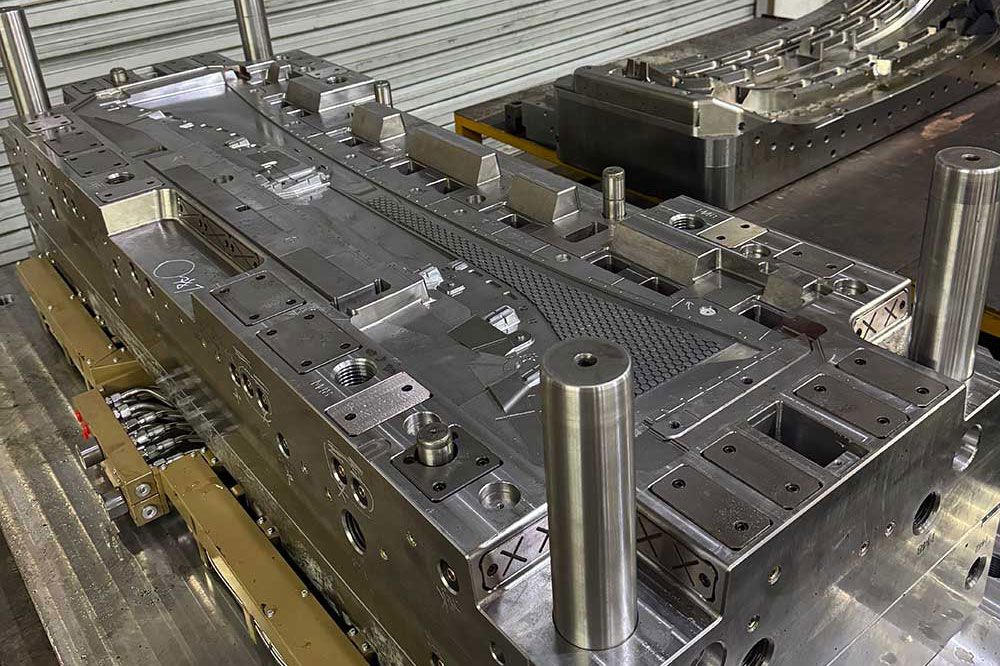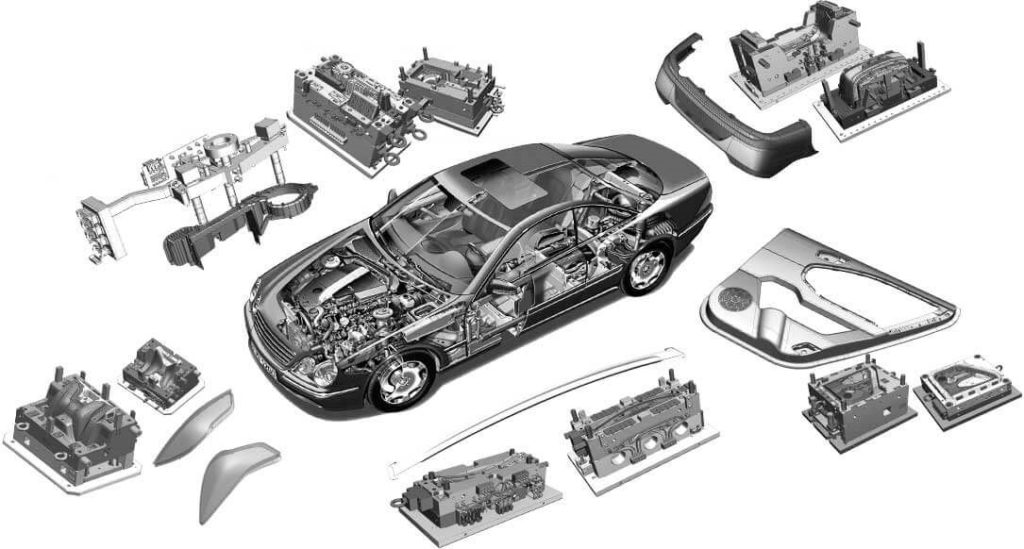Low Volume Injection Molding: 5 Key Advantages for Cost, Speed, and Flexibility
What is Low Volume Injection Molding?

Low volume injection molding is an advanced manufacturing process designed for producing small to medium production runs of plastic components. Unlike traditional high-volume molding, which requires significant upfront tooling investment, low volume injection molding offers a more flexible, cost-efficient, and rapid solution for businesses needing 1,000 to 100,000 parts.
This process is particularly beneficial for industries such as medical, automotive, aerospace, consumer electronics, and industrial prototyping, where rapid design iterations and small batch production are essential.
In this article, we will explore the five major advantages of low volume injection molding, focusing on cost savings, speed, flexibility, material efficiency, and risk reduction.
1. Cost-Effectiveness: Reduce Upfront Investment & Minimize Waste
1.1 Lower Tooling Costs Compared to High-Volume Molding
Traditional high-volume injection molding requires expensive, hardened steel molds that can cost between $20,000 to $100,000, making it less viable for startups, small businesses, or short-run production needs.
In contrast, low volume injection molding typically uses:
✅ Aluminum molds – Faster to machine, cheaper than steel molds
✅ Soft steel molds – More durable than aluminum but still cost-effective
✅ 3D-printed molds – Ideal for prototyping & low-run production
| Mold Type | Average Cost | Production Lifespan | Application |
|---|---|---|---|
| Aluminum | $3,000 – $10,000 | 5,000 – 50,000 parts | Rapid prototyping, short-run production |
| Soft Steel | $8,000 – $25,000 | 50,000 – 200,000 parts | Low to mid-volume production |
| Hardened Steel | $20,000 – $100,000+ | 500,000+ parts | Mass production |
Aluminum and soft steel molds offer an ideal balance between durability and cost, making low volume injection molding a cost-effective solution for businesses looking to test new designs or enter niche markets.
1.2 Reduced Material Waste & Cost Savings
With low volume injection molding, manufacturers can optimize material usage, reducing waste compared to traditional mass production. This is particularly useful for high-cost engineering plastics such as PEEK, PPS, and LCP, which are expensive when wasted.
Additionally, modern computer-aided design (CAD) and mold flow simulation software helps engineers refine mold design and injection parameters, ensuring minimal material waste and improving efficiency.
Key waste reduction techniques include:
-
Optimized gate and runner design – Minimizes excess plastic usage
-
Scientific molding process – Ensures material consistency and reduces defects
-
Recyclable thermoplastics – Helps lower overall material costs
2. Faster Production & Shorter Lead Times
2.1 Quick Tooling Fabrication & Prototyping
Traditional steel molds take 8-12 weeks to manufacture, while low volume injection molding molds can be produced in just 2-4 weeks, significantly reducing product development time.
2.2 Accelerated Time-to-Market
Companies can launch new products faster by using low volume injection molding for:
✔ Product testing before full-scale production
✔ Limited edition product releases
✔ Pilot production runs for market feedback
By reducing production lead time from months to weeks, businesses can stay ahead of the competition.
3. Greater Design Flexibility & Customization
3.1 Easier Design Modifications
Unlike high-volume molds, which are costly to modify, low volume injection molding molds allow for faster and cheaper design changes. This is beneficial for:
✔ Iterative product development
✔ Custom, low-batch orders
✔ Medical and aerospace industries with strict regulations
3.2 Multi-Cavity & Family Molds for More Options
✅ Multi-cavity molds produce multiple parts at once, increasing efficiency.
✅ Family molds produce different components in the same cycle, reducing tooling costs.
4. Material Efficiency: Wide Range of Plastic Choices
4.1 Suitable for Specialty & High-Performance Materials
With low volume injection molding, manufacturers can use engineering-grade resins without excessive material costs.
Common Plastic Materials for Low Volume Injection Molding:
| Material | Properties | Industry Application |
|---|---|---|
| ABS | Impact-resistant, durable | Automotive, electronics |
| PEEK | High temperature & chemical resistance | Aerospace, medical |
| PC (Polycarbonate) | Transparent, high impact strength | Optical, lighting |
| TPU | Flexible, rubber-like | Wearables, medical devices |
5. Lower Risk & Scalable Production
5.1 Reduces Financial Risk Before Mass Production
For new product launches, low volume injection molding provides an opportunity to:
✔ Test market demand without large investment
✔ Refine product designs before full-scale production
✔ Avoid overproduction and excess inventory costs
5.2 Scalable Manufacturing Strategy
As demand increases, businesses can scale up production by:
✔ Gradually increasing mold cavitation
✔ Upgrading from aluminum to steel molds
✔ Transitioning to high-volume injection molding once demand stabilizes
Why Choose Huazhi Technology for Low Volume Injection Molding?

At Huazhi Technology, we specialize in precision injection molding, offering:
✅ Fast turnaround times – Mold fabrication in as little as 2-4 weeks
✅ Cost-effective tooling – Aluminum & soft steel mold solutions
✅ Material flexibility – Wide selection of engineering-grade plastics
✅ ISO-certified quality control – High-precision, defect-free production
With years of expertise in injection molding, we serve industries including medical devices, automotive, electronics, and aerospace.
Conclusion
Low volume injection molding offers unparalleled benefits in cost savings, speed, flexibility, material efficiency, and risk reduction. Whether you’re launching a new product, testing market demand, or producing small-batch custom parts, this process is the ideal choice for agile manufacturing.
🚀 Ready to start your low volume injection molding project? Contact Us today and get a free quote!
FAQs:
Q1: What is considered low volume injection molding?
Low volume injection molding typically involves producing 1,000 to 100,000 parts, offering a cost-effective solution for prototyping, limited production runs, and specialty products.
Q2: What are the best materials for low volume injection molding?
Common materials include ABS, PEEK, PC, TPU, and nylon, depending on application needs such as strength, temperature resistance, and flexibility.
Q3: How long does it take to produce a mold for low volume injection molding?
Mold fabrication can take 2-4 weeks for aluminum molds and 4-6 weeks for soft steel molds, significantly faster than traditional high-volume steel molds.
Q4: Can I modify my mold after production starts?
Yes! One of the key advantages of low volume injection molding is the ability to modify molds easily without excessive costs, making it ideal for product iterations.
Q5: How much does low volume injection molding cost?
Costs vary based on mold material, complexity, and production volume, but generally, low volume injection molding is 50-80% cheaper in tooling costs compared to high-volume molding.
